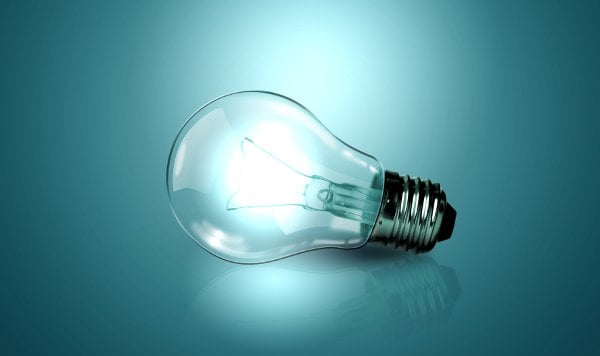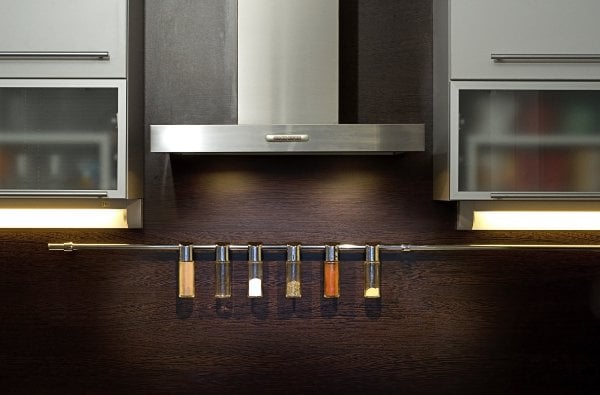Have you ever noticed how under-cabinet lighting can make a room, almost any room, look better? Kitchens, studies, laundry rooms and bathrooms can all be improved by this simple addition.
While there are a plethora of lighting options, each has its own virtues and methods of installation. If you’re interested in complementary lighting in any of your rooms, take a look at this helpful primer on lighting choices and tips for installing each.

© francisco - Fotolia.com
LED bulbs are all the rage these days and this remains the case with under-cabinet lighting.
Pros: They’re energy efficient, bright, and can last for decades. While they’re known for their stark white-blue luminance, some newer bulbs imitate the warmer white glow of incandescent bulbs, making them a good possibility for any space.
Cons: The higher price tag may scare off some potential buyers, but LED proponents will tell you that the energy they save makes up for the elevated cost. Another thing to consider with LED lighting is that while the bulbs themselves are quite small, the lighting system itself is comparable in size to fluorescent or incandescent lamps.
There are several under-cabinet applications for LED lighting.
LED Tape lighting, also called strip lighting, is a popular under-cabinet choice for its low profile and easy installation.
Installation Tips:
LED stick lighting is nearly identical to LED tape lighting except the lights are housed on a rigid plastic or metal “stick.”
Installation Tip:
LED spot lighting is often used if focused bright light is the goal.
Installation Tip:

© Sergey Nivens - Fotolia.com
Incandescent lighting is the most common form of under-cabinet lighting due to its low cost. Although incandescent bulbs have gotten a bad rap due to their inefficiency and short life, more expensive varieties, like xenon and halogen, last longer, and are slightly more energy efficient than standard bulbs.
Pros: It’s cheap, there are several options, the lighting is warm, and it’s easy to replace bulbs when they burn out.
Cons: They have the shortest life, about two years if the light is used three hours per day. They are the least energy efficient.
Those considering incandescent under-cabinet lighting have three choices: puck, light strips, and linear fixtures.
Puck Lighting: Puck lights look similar to hockey pucks, hence the name. These lights are popular choices for those who would like to have circular pools of light, rather than an entire area lit. They have a low profile of about two inches which means they can be mounted under cabinets or recessed easily.
Installation Tips:
Light Strips: Incandescent light strips are similar to LED strips in that they too can be cut to fit any area. They provide warm, uniform lighting for the desired area.
Installation Tips:
Linear Fixtures: Sometimes referred to as light bars, these come in a variety of shapes and sizes. Multiple halogen or xenon lamps produce the light in these fixtures. For more illumination, consider xenon lamps.
Installation Tip:

© amikosa & Fotolia
Fluorescent lighting is a third option for under-cabinet lighting. They are more energy efficient than incandescent lighting, though outperformed by LED bulbs. These fixtures are sometimes sold in two classifications: regular and premium. Some companies opt to include multiple brightness settings as opposed to dimmers.
Pros: Fluorescent bulbs offer better efficiency and longer life as compared to incandescent ones.
Cons: They’re more expensive than incandescent bulbs. Bulb life can be shortened by frequent on/off operation.
Compact Fluorescent Puck Lighting - These perform like incandescent puck lights, but better. They can be plugged in or hardwired depending on the product and wishes of the installer.
Installation Tips:
Linear Fluorescent Fixtures - Again, these fluorescent fixtures are very similar to their incandescent neighbors, they just perform better.
Installation Tip:
Complementary lighting can give rooms in your home just the look you’ve been aiming for. In theory and if price is of no consequence, LED technology is superior, but in reality, every room is different. If you’re considering under-cabinet lighting, take a trip to your local hardware store and see examples of each lighting type in person. That way, your complementary lighting will be tailored specifically to you.
Additional photo credits: Feature Home Depot "How To" image - courtesy © pics721 - Fotolia.com